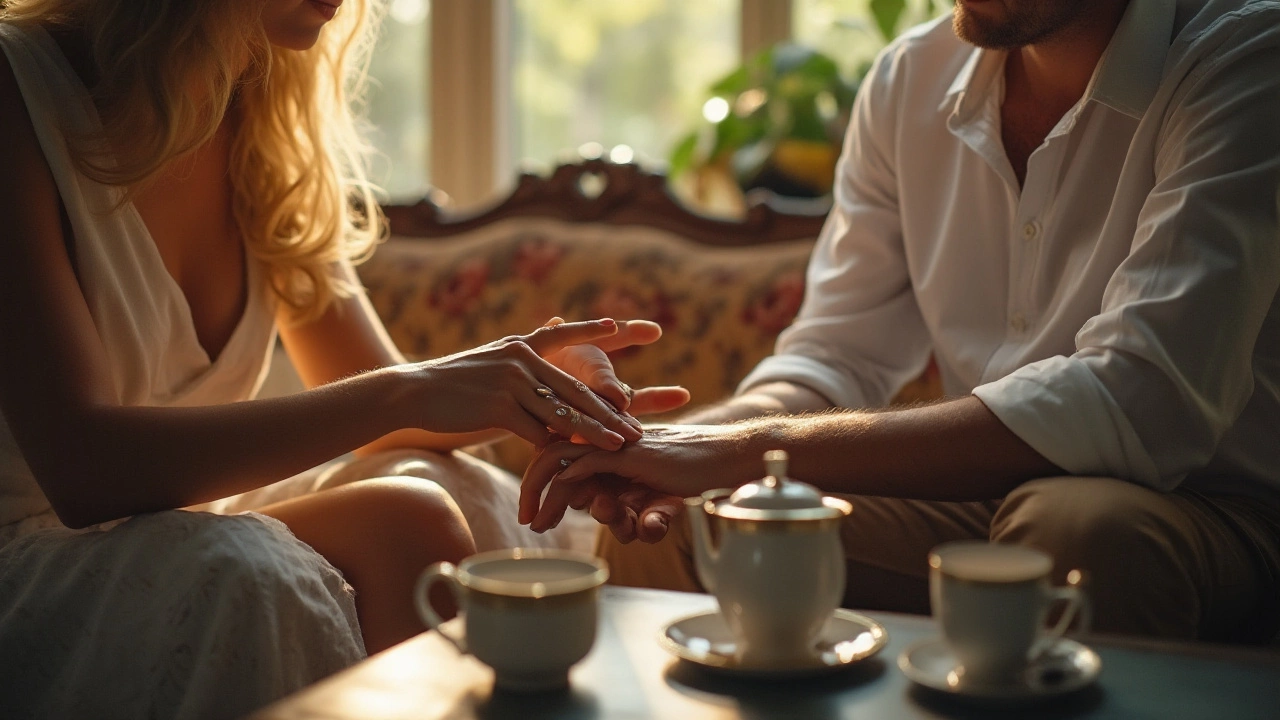Married Ring Etiquette: What Every Couple Should Know
Ever wondered why some couples swap rings during the ceremony while others wait until after? The answer lies in a mix of tradition, personal preference, and simple courtesy. Getting the ring etiquette right can keep the day smooth and avoid awkward moments.
When to Exchange the Rings
The classic moment is right after the vows. That’s when the officiant asks you both to place the rings on each other's fingers. If you’re having a civil ceremony or a small gathering, you might exchange them beforehand to keep things moving. The key is to let your guests know the plan in advance – a quick note on the program or a whisper to your planner does the trick.
How to Wear the Rings Properly
Most people wear the wedding band on the left ring finger, because of the old belief that a vein runs straight to the heart. In some countries, though, the right hand is the norm. Choose what feels right for you and keep it consistent – switching hands mid‑day can look confusing.
If you’ve got an engagement ring, slide the wedding band right up against it. This protects the engagement stone and keeps both rings snug. For men, a simple band works best; if you love a little flair, a brushed or matte finish adds texture without stealing the spotlight.
Got a family heirloom ring? Treat it with extra care. Have it cleaned before the ceremony and store it in a soft pouch overnight. When you hand it to your partner, a gentle, steady hand shows respect for its history.
Remember the “right hand” rule for engagement rings in some cultures – they’re worn on the right until the wedding, then moved to the left. If you’re mixing traditions, explain the switch to close family so no one feels left out.
When it comes to ring sizing, a proper fit matters. A ring that’s too loose can slip off during dancing, while a tight one might cause discomfort. Most jewelers offer a free resizing before the big day, so take advantage of that.
Don’t forget about ring insurance. One accident can happen – an unexpected dip in the pool or a dropped ring during a toast. Insuring both rings gives you peace of mind and covers any repair or replacement costs.
Finally, be mindful of cultural nuances. In some African traditions, the groom may give a set of rings to the bride’s family as a sign of respect. In Hindu weddings, the couple often exchanges multiple rings symbolizing different vows. If your ceremony includes such customs, plan the timing and presentation carefully.
Bottom line: clear communication, proper sizing, and a touch of cultural awareness go a long way in married ring etiquette. Keep the focus on the love you share, and the rings will do the rest.
Should You Wear Your Engagement Ring After the Wedding?
Deciding whether to keep wearing your engagement ring after tying the knot isn't as straightforward as it seems. This choice often involves personal sentiment, cultural norms, and practicality. While some see their engagement ring as an eternal icon of love, others prefer to focus on their wedding band. We delve into the history, traditions, and modern perspectives to help you decide what's best for you.
View More